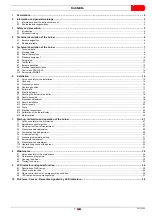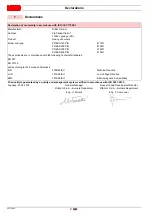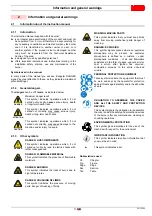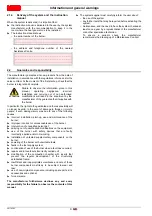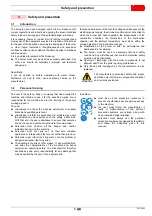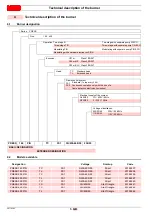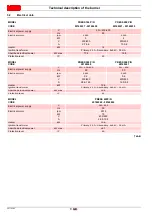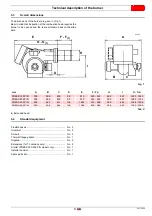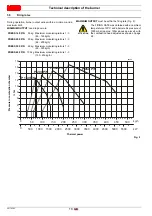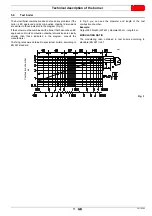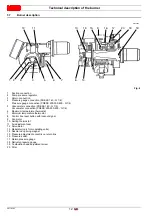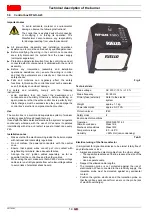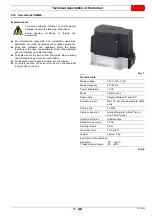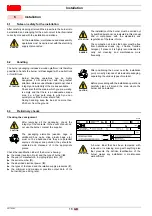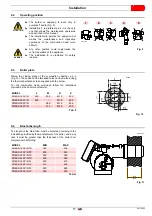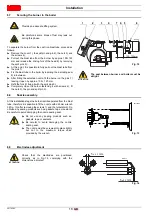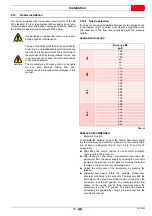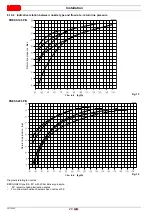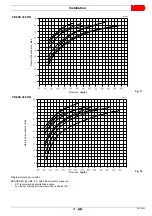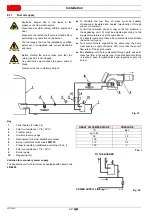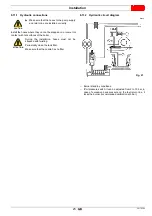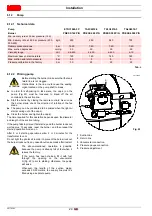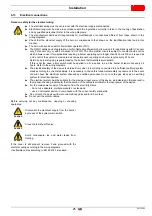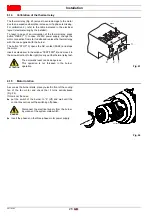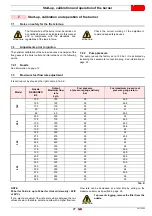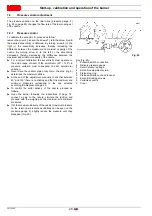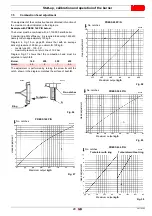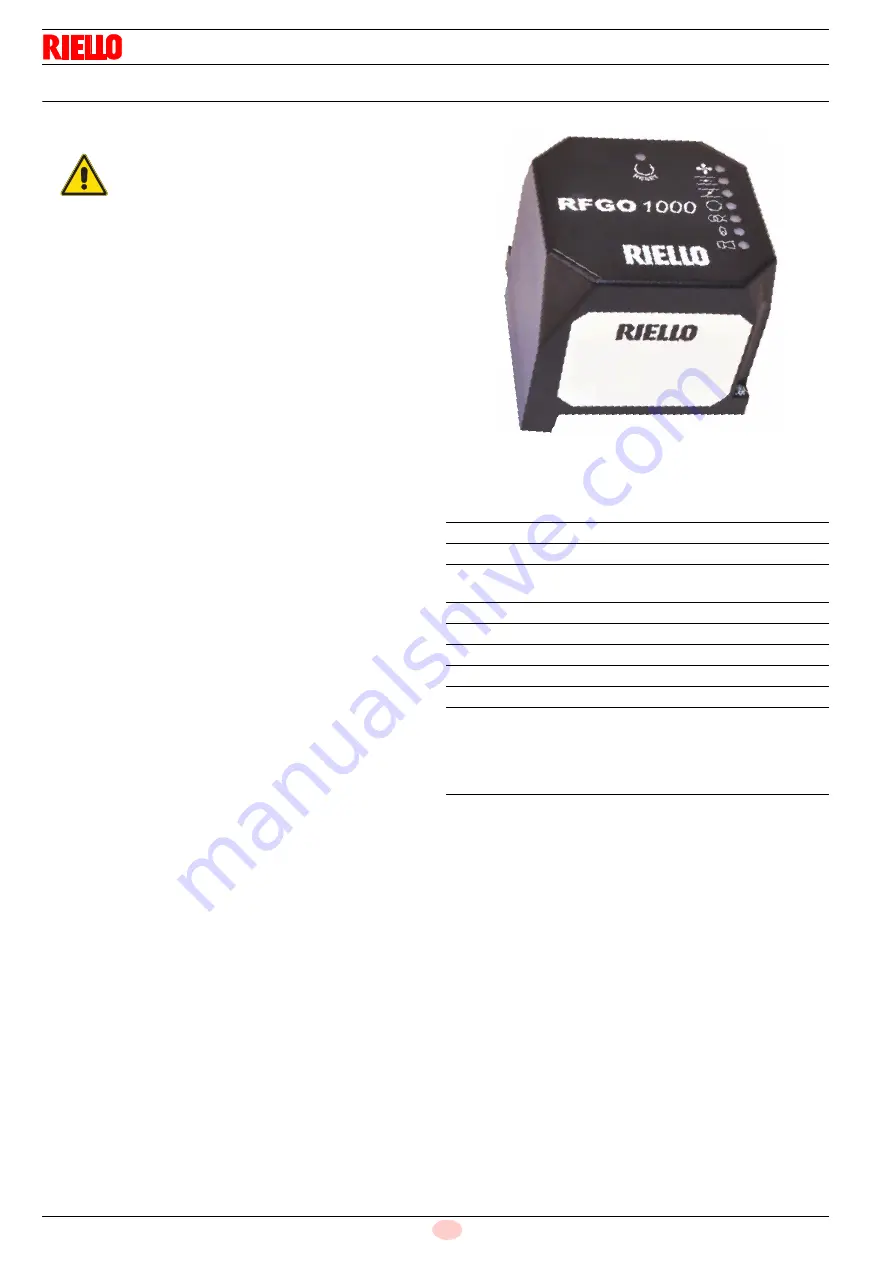
20170392
14
GB
Technical description of the burner
5.9
Control box RFGO-A23
Important notes
All interventions (assembly and installation operations,
assistance, etc.) must be carried out by qualified personnel.
Before modifying the wiring in the control box connection
area, fully disconnect the system from the power supply
(omnipolar separation).
Protection against electrocution from the control box and all
connected electric components is obtained with the correct
assembly.
Before any intervention (assembly and installation
operations, assistance, etc.), ensure the wiring is in order
and that the parameters are correctly set, then make the
safety checks.
Falls and collisions can negatively affect the safety
functions. In this case, the control box must not be operated,
even if it displays no evident damage.
For safety and reliability, comply with the following
instructions:
–
avoid conditions that can favour the development of
condensate and humidity. Otherwise, before switching on
again, make sure that the entire control box is perfectly dry!
–
Static charges must be avoided since they can damage the
control box’s electronic components when touched.
Use
The control box is a control and supervision system of medium
and large capacity forced draught burners.
If used with the flame detection electrode the system can operate
continuously whereas, with the use of UV sensors it operates
intermittently with stop and restart request at least once every
24h.
Installation notes
•
Make sure that the electrical wiring inside the boiler complies
with national and local safety regulations.
•
Do not confuse the powered conductors with the neutral
ones.
•
Ensure that spliced wires cannot get into contact with
neighbouring terminals. Use adequate ferrules.
•
Arrange the H.V. ignition cables separately, as far as
possible from the control box and the other cables.
•
When wiring the unit, make sure that AC 230 V mains voltage
cables are run strictly separate from extra low-voltage cables
to avoid risks of electrical shock hazard.
Technical data
Tab. D
Electrical wiring of the flame detector
It is important for signal transmission to be almost totally free of
any disturbances or loss:
•
Always separate the detector cables from the other cables:
– The capacitive reactance of the line reduces the size of the
flame signal.
– Use a separate cable.
•
Respect the allowed cable lengths.
•
The ionisation probe is not protected against the risk of
electrocution. When connected to the electricity supply, the
ionisation probe must be protected against any accidental
contact.
•
Position the ignition electrode and the ionisation probe so
that the ignition spark cannot form an arc on the probe (risk
of electric overcharge).
ATTENTION
To avoid accidents, material or environmental
damage, observe the following instructions!
The control box is a safety device! Avoid opening
or modifying it, or forcing its operation. The
Manufacturer cannot assume any responsibility
for damage resulting from unauthorised work!
Mains voltage
AC 230 V -15 % / +10 %
Mains frequency
50 / 60 Hz
Primary fuse (external)
Refer to the electric
system
Weight
approx. 1.1 kg
Power absorption
approx. AC 7 VA
Protection level
IP40
Safety class
II
Environmental conditions
Operation
Climatic conditions
Mechanical conditions
Temperature range
Humidity
DIN EN 60721-3-1
Class 1K2
Class 1M2
-50...+85°C
< 90% RH (non-condensing)
Fig. 6
20152163
Содержание PRESS 140 P/N
Страница 2: ...Translation of the original instructions...
Страница 55: ...53 20170392 GB Appendix Electrical panel layout 0 0 0 0 1 1 1 2 1 3 1 1 1 1 1 1 1 1 1 1 2 1 DIRECT START UP...
Страница 57: ...55 20170392 GB Appendix Electrical panel layout 0 1 2 2 2 0 DIRECT START UP...
Страница 58: ...20170392 56 GB Appendix Electrical panel layout 0 1 1 1 STAR TRIANGLE START UP...
Страница 59: ...57 20170392 GB Appendix Electrical panel layout 0 1 0...


